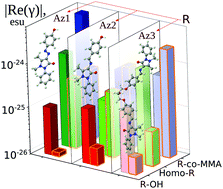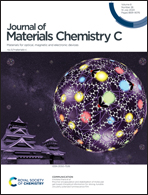Novel efficient nonlinear optical azo- and azomethine polymers containing an antipyrine fragment: synthesis and characterization
Abstract
A set of new methacrylate monomers based on azobenzene/azomethine moieties coupled with an antipyrine heterocyclic fragment was designed. Their free radical polymerization provided six homo-/copolymers with photoactive side chains. These novel materials were characterized with NMR, IR and UV-vis spectroscopies, as well as DSC and SEC. Their THF solutions demonstrated an efficient refractive nonlinear optical (NLO) response with an optical quality factor, FOM, of 102 – 2 × 103via self-action of single picosecond range laser pulses at a wavelength of 532 nm. Their efficiency enhances in the following set of chromophores: azomethine < azo < bis-azomethine. The polymers exhibit higher cubic hyperpolarizabilities against their corresponding initial molecules, while the fractional contribution of the photoactive group reduces. Incorporation of bis-structured units improves both the polymer properties and the NLO response efficiency of the materials. The fractional contribution of a photochromic group to the macromolecular refractive/absorptive NLO optical responses was analyzed for the first time.



 Please wait while we load your content...
Please wait while we load your content...